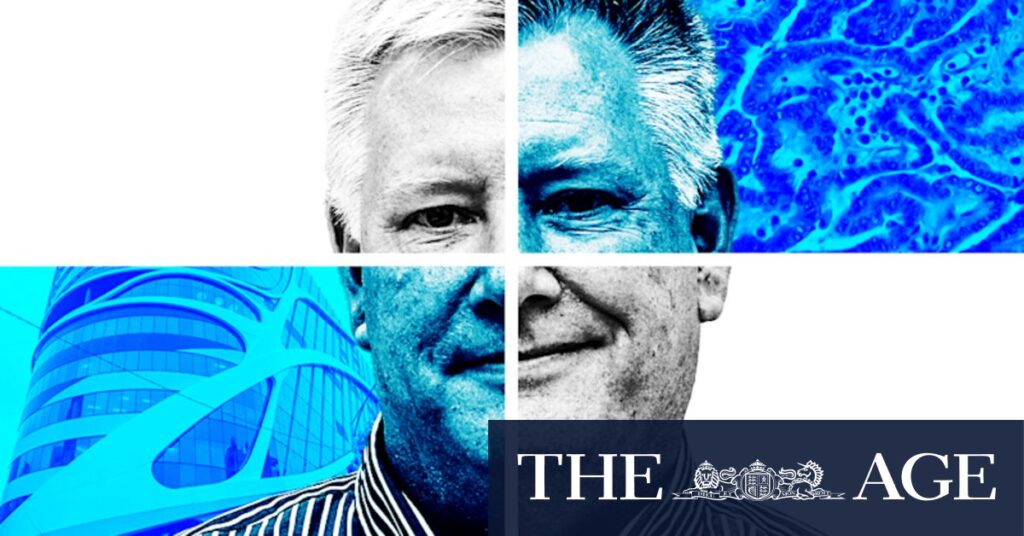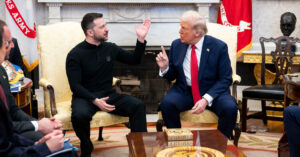
In a dramatic turn of events, some of the world’s leading medical journals, including Nature Immunology, have retracted and corrected research articles by Mark Smyth, labeling the data as fabricated or falsified. This revelation has sent shockwaves through the scientific community, casting a shadow over Smyth’s once-stellar reputation as one of Australia’s top scientists.
The scandal erupted after an internal investigation by Smyth’s own institute, QIMR Berghofer, in 2021 found that he had committed “serious research misconduct.” The findings were subsequently referred to corruption authorities. Smyth’s work was foundational to the development of Nelistotug, an experimental cancer drug that aims to harness the immune system to combat tumors. However, the credibility of this treatment is now under scrutiny, as doubts about the validity of the underlying research have surfaced.
Unraveling the Deception
The investigation into Smyth’s misconduct has revealed a complex web of deceit. According to sources, serious concerns about his conduct date back to his tenure at the prestigious Peter MacCallum Cancer Centre. Colleagues have come forward with claims of fabricated data and experiments that were likely never conducted. Secret recordings and leaked documents have further corroborated these allegations.
CSIRO chief executive Doug Hilton has voiced the need for an independent research misconduct watchdog, arguing that universities should not be left to investigate allegations against their own staff. “It was like a priest in a parish: everyone knew this guy was fabricating data,” said a senior executive in the sector, who spoke anonymously. The call for reform has gained momentum, with many in the scientific community demanding an overhaul of how misconduct is handled.
The Impact on Patients and Science
For patients involved in the Nelistotug trials, the implications of this scandal are profound. Many were told that this experimental drug was their last hope. Now, the legitimacy of the treatment is in question. Two of Smyth’s co-authors have expressed fears that the drug, which likely cost millions to develop, may not work as intended.
“Even if it does not cause any harm, it’s still very wrong. The patients who take part expect to get a drug that actually works,” said Casey, a former co-author.
The patent for Nelistotug cites six studies co-authored by Smyth, including one that was retracted due to fabricated data. This revelation has raised concerns about the integrity of the research and the potential consequences for patients relying on the treatment.
Historical Context and Expert Opinions
Smyth’s fall from grace is reminiscent of other high-profile scientific scandals, such as the case of Hwang Woo-suk, a South Korean scientist who fabricated stem cell research. These incidents highlight the vulnerability of the scientific community to misconduct and the need for rigorous oversight.
David Vaux, a prominent cancer researcher and past deputy director of the Walter and Eliza Hall Institute, has been a vocal critic of scientific misconduct. He first encountered Smyth in 1995 and has since raised concerns about the integrity of Smyth’s work. Vaux’s skepticism was validated when he identified duplicated and altered flow cytometry plots in a 2004 paper co-authored by Smyth, leading to its retraction by Nature Immunology.
“I just looked at them, fused the images, and it was immediately clear they had been duplicated and altered,” said Vaux.
The Institutional Response
The University of Melbourne, responsible for investigating research misconduct at Peter MacCallum Cancer Centre, faced criticism for its handling of the Smyth case. Despite evidence suggesting data fabrication, the university concluded there was insufficient proof to take action against Smyth. This decision allowed him to continue his career at QIMR Berghofer, where similar allegations eventually surfaced.
A senior Australian scientist criticized the university’s approach, stating, “The institutional lens is: we have to avoid any suggestion the University of Melbourne has dodgy people, so let’s find him not guilty and move him on.”
The Future of Scientific Integrity
The Smyth scandal underscores the urgent need for systemic changes in how scientific misconduct is addressed. Experts argue that independent oversight is crucial to maintaining the integrity of research and protecting the interests of patients and the public.
As the scientific community grapples with the fallout from this scandal, the focus shifts to preventing similar incidents in the future. Strengthening transparency, accountability, and oversight mechanisms will be essential in restoring trust in scientific research.
As for Mark Smyth, his current whereabouts remain unknown. Approached recently, he declined to comment on the allegations, stating, “No thanks, I’ve been asked … a million times.”
The implications of this scandal will likely reverberate through the scientific community for years to come, prompting a reevaluation of the systems in place to safeguard research integrity.






